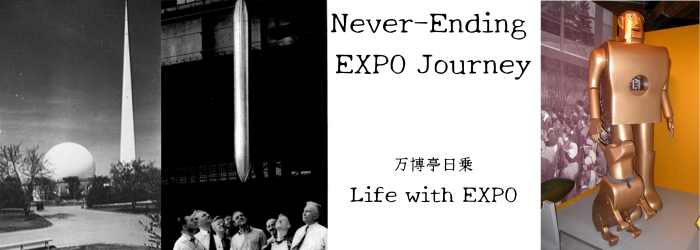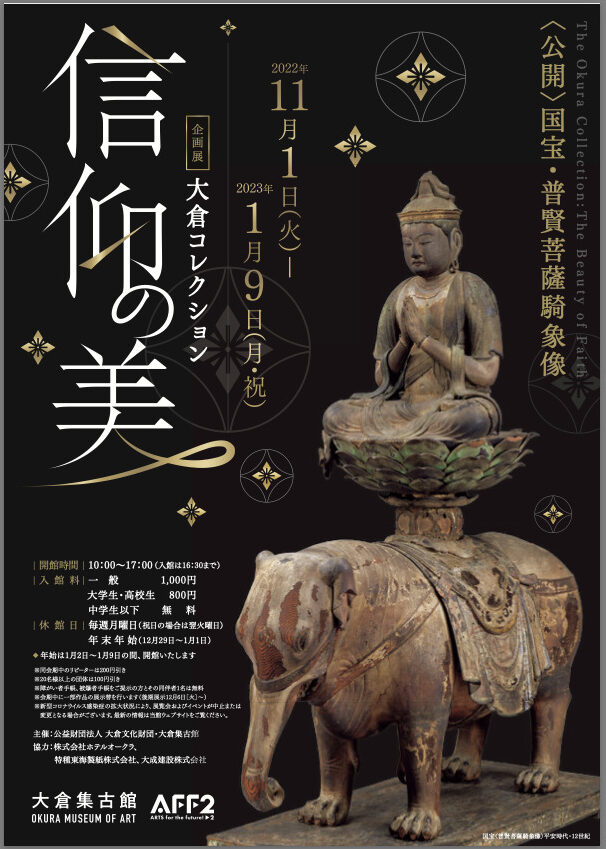I went to Tohaku (Tokyo National Museum)
The other day (as I introduced in <1>), I just went there for the coverage of “Neil’s salvaged goods“, but I went again.
Actually, when I visited to see the exhibition of the Neil, I bought something called “National Museum Members Pass“. This pass is valid for one year and allows free admission to the Tokyo National Museum, as well as the regular exhibitions of the Kyoto, Nara, and Kyushu national museums.
Most likely, you will only go to the Tokyo, but theTohaku’s main museum’s “regular exhibition”, the “general cultural exhibition”, is a substantial exhibition of National Treasures and important cultural properties, so you can enjoy it considerably.
According to Tohaku’s website, you can see the followings;
“From Thursday, April 1, 2021, the new membership system of the Tokyo National Museum has started.”
So, it seems that three types of membership systems have been established as follows (quote);
This membership program is suitable for frequent visitors and those that enjoy dining and attending events at the museum. Benefits include: unlimited free admission to regular exhibitions at four national museums (Tokyo, Kyoto, Nara and Kyushu), six free tickets to special exhibitions at Tokyo National Museum, and discounted admission to special exhibitions at four National Museums (group discount price). Friends of TNM membership includes free “TNM News” subscription, as well as discounted prices on event admissions, gift shop items and restaurants.
Members Premium Pass
Members Premium Pass is suitable for frequent visitors to both regular exhibitions and special exhibitions. Benefits include: unlimited free admission to regular exhibitions at four national museums (Tokyo, Kyoto, Nara and Kyushu) and four free tickets to special exhibitions at Tokyo National Museum, as well as discounted admission to special exhibitions at four National Museums (group discount price).
Members Premium Pass holders can also subscribe to “TNM News,” issued four times a year, for an additional 900 yen.
National Museums Members Pass (shared among four national museums)
This membership scheme is shared among four national museums (Tokyo, Kyoto, Nara and Kyushu). Benefits include: unlimited free admission to regular exhibitions at four national museums, as well as discounted admission to special exhibitions at four National Museums (group discount price).
*
Last time, I bought a “National Museum Members Pass” (annual fee: 2,500 yen). If you buy it normally, the general cultural exhibition viewing fee is 1,000 yen (students 500 yen)/one time, so if you visit 3 times or more, this is a better deal.
Anyway, I went to Tohaku again.
-300x225.jpg)
東京国立博物館
Tokyo National Museum (Tohaku)
National Treasure “Fugen Bosatsu statue (The Bodhisattva Fugen)”
The main purpose of this time is the “Fugen Bosatsu statue (The Bodhisattva Fugen)” which is on display from April 11th to May 7th.
-225x300.jpg)
『普賢菩薩像』 平安時代・12世紀
“The Bodhisattva Fugen ” Heian Period, 12th century
I have known this work since I was a child. This is because I used to collect postage stamps when I was in elementary school, and this work was in the National Treasure series. It is no exaggeration to say that I learned about various national treasures and ukiyo-e prints by Katsushika Hokusai and Utagawa Hiroshige and others, from stamps when I was in elementary school. In particular, the stamp of this “Fugen Bosatsu statue” was quite popular at the time, and I remember that I got it at a high price for an elementary school student. (When I looked for it this time, it was still in my house.)
-225x300.jpg)
普賢菩薩像切手
Postage Stamp of “Fugen Bosatsu(The Bodhisattva Fugen)”
Well, this Fugen Bosatsu statue is a National Treasure. It is a work of the 12th century, Heian period, and according to the commentary on the Tohaku website, it says as follows;
“Fugen, a Buddhist god associated with wisdom, has been widely worshipped in Japan. Many paintings of him exist, but this one, created over 800 years ago, has an unrivaled delicacy and dreamlike atmosphere. It shows Fugen appearing on earth on his white elephant, with flowers miraculously falling from the sky.” .
This exhibition seems to have been opened to the public after three years of dismantling and repairing was successfully completed.
1900 Paris Exposition Secretariat Report
A National Treasure like this would have been exhibited at the World Expo, right?
I decided to check it out.
Among the past world expositions, I decided to research the 1900 Paris Exposition Secretariat Report (National Diet Library Digital Collection).
I remember that at 1900 Paris World Exposition, Tadamasa Hayashi took charge of producing Japanese Exhibition as a whole, as the head of the administrative office, and put a lot of efforts into exhibiting arts that had a Japanese lineage, and there is a record that he exhibited a lot of Japanese antique arts.
Therefore, I suspected that it was most likely that Japanese antiques had been exhibited in 1900 Paris World Exposition.
I wrote simply, “I’ll look into the Secretariat Report,” but it’s really hard to look into this.
It hurts my eyes, but I did my best to find out where the data is while chasing the old squashed characters.
It was a very time consuming task.
And I finally found it!
From the end of page 839 of the “Secretariat Report”, there is a list of antique art exhibits.
There is a list of 17 items on one page, but it is as many as 37 pages and a half. There are 7 items in the last half.
That means 636 works! was transported to Paris and exhibited.
Moreover, even though it appears as one item on this list, there are two or more items below it, such as “68 pieces of “Banchaire”, so the actual number of works should be much higher.
In fact, on page 839 of the Secretariat Report, it says,
“…the number of antiques is 164 pictures and calligraphies, 25 wood carvings, 163 metal carvings, 130 lacquer works, 273 ceramics, 36 textiles…”
This adds up to 791 works!
This must have been a very impressive exhibition.
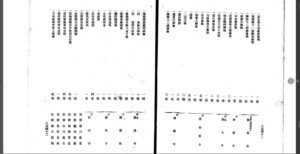
「千九百年巴里萬國博覧会事務局報告」(部分)
“1900 Paris World Exposition Secretariat Report” (Part)
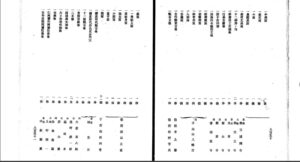
「千九百年巴里萬國博覧会事務局報告」(部分)
“1900 Paris World Exposition Secretariat Report” (Part)
“Fugen Bosatsu” is not found in this list of the art exhibited from Japan.
There is something called “Fugen Enmei Statue” and a wooden carved “Fugen Bosatsu Statue” (exhibited by Mr. Kihachiro Okura) on the list, but it seems that the “Fugen Bosatsu Statue” as a “picture” was not exhibited.
The National Treasure “Fugen Bosatsu Statue” (Okura Shukokan) was exhibited at the 1900 Paris Exposition.
By the way, this wood carving “Fugen Bosatsu Statue” exhibited by Mr. Kihachiro Okura is considered to be a national treasure “Fugen Bosatsu Statue” currently in Okura Shukokan.
According to the website WANDER National Treasure,
*
This is a wooden statue of Fugen Bosatsu Statue (riding an elephant), made in the late Heian period.
It is believed that it was made by a Buddhist sculptor of the En school around Kyoto and enshrined as a side attendant of Shaka Nyorai in some temple, but its origin is unknown.
It is said that Kihachiro Okura, the founder of the Okura Zaibatsu, took over from Hisanari Machida, the first director of the Tokyo National Museum.
*
Also, in the pamphlet when Okura Shukokan released this national treasure “Fugen Bosatsu Statue” from last year to January this year, with a picture of this national treasure “Equestrian statue of Fugen Bodhisattva”, it says as follows;
*
Kihachiro Okura, a businessman who founded the Okura Shukokan, was concerned about the disastrous sight of Buddhist statues and paintings flowing out of temples and shrines due to the abandonment of Buddhism in the early Meiji era and devoting himself to the protection of these cultural assets. Kihachiro’s collection of Buddhist art includes a large number of excellent works from the Middle Ages to the early modern period, including the beautiful works created by Shakamuni beliefs, esoteric Buddhism, and Jodo Buddhism beliefs.
*
It seems that the “Fugen Bosatsu Statue” at the Tohaku was not exhibited at the Paris Expo, but as I investigated, I came across the “Fugen Bosatsu Statue”, a national treasure that was actually exhibited at the 1900 Paris Exposition.
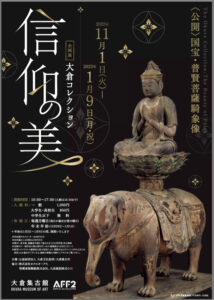
大倉集古館パンフレット
Okura Museum of Art Pamphlet
Returning to the exhibition list of ” pictures and calligraphies ” also includes “Sesshu’s Four Seasons Landscape” that we know well.
It seems that this exhibition was unprecedented.
In addition to temples in various parts of Japan, and the Tokyo Imperial Household Museum (now Tohaku), there are also many exhibitors’ names from influential figures of the time, such as Kaoru Inoue and Yanosuke Iwasaki.
Other names such as Tadamasa Hayashi and Tsunetami Sano are also found.
The Fugen Bosatsu was not found to be exhibited at the 1900 Paris World Exposition, but it was a day that gave me another glimpse into the history of the World Exposition.
After enjoying the statue of Fugen Bosatsu, I decided to investigate the exhibits related to the 1893 Chicago World Exposition in Tohaku. (Continue)
